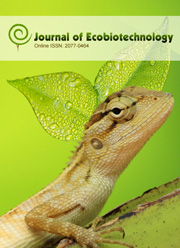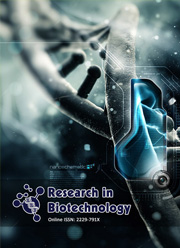Insights on metal-microbe interactions in Bacillus sp. and Chromohalobacter sp. from a solar saltern
Keywords:
Metal Tolerance, Bacteria, Solar saltern, BIOLOG, ProteinsAbstract
Metal tolerant bacterial strains viz Bacillus cereus (RS-1), Bacillus sp. (RS-2) and Chromohalobacter beijerinckii (RS-3) were isolated from the surface sediments of a solar saltern in Ribandar Goa, situated in the vicinity of the Mandovi estuary influenced by mining activities. RS-1 that showed optimal growth at 20 psu salinity was tolerant to 10 mM Co2+ while hypersaline isolates RS-2 (100 psu) and RS-3 (200 psu) were tolerant to Ni2+ and Mn2+ at 1 mM and 10 mM respectively. Experimental studies revealed that growth was stimulated at low concentrations of metal amendments for all the isolates. Growth of RS-1 was stimulated by ~450% on addition of 100 µM Co2+ whereas for RS-2 and RS-3 it was at 100 µM Ni2+ (70%) and 5 mM Mn2+ (450%). The stimulation in growth was coupled to a dip in respiration rates for the isolates RS-1 and RS-3 when compared to metal unamended controls. The respiration rates for RS-1 and RS-3 during peak growth in the presence of metal were 17.0 and 27.5 compared to the controls which were 24.7 and 473.4 pg formazan cell-1 day-1 respectively. Presence of Ni2+ stimulated the respiration rate (26%) in RS-2 when compared to the control (417.4 pg formazan cell-1 day-1). Co2+ and Mn2+ had a significant negative impact on the utilization of carbohydrates and carboxylic acids in RS-1 and RS-3 respectively. Ni2+ had a stimulatory effect on the utilization of BIOLOG GP2 substrates by RS-2. The phenotypic expressions observed above were correlated with the changes in whole cell protein profiles in the presence and absence of added metal. Addition of Co2+ to RS-1 resulted in a significant up-regulation of 57 kDa fraction while there was a conspicuous down-regulation of 29 kDa protein. The major protein fraction up-regulated in RS-2 in the presence of Ni2+ was a 59 kDa protein while most of the fractions were down-regulated. In RS-3, the addition of Mn2+ at 10, 100 and 1000 µM up-regulated a 50 kDa protein while the 53 kDa fraction was down-regulated. This study relates the metal induced regulation of proteins to phenotypic variations encountered in growth and substrate utilization.



 .
.